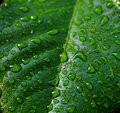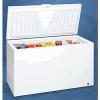Solving problems every tea drinker faces.
Exclusive subscriber benefits:
Receive four FREE quality ebooks worth $60
-
Save at least $5 during your first purchase
Gourmet Chinese green tea is harvested once a year in spring. Depending on the region, cropping dates can vary from February to May.
Ever wonder why your green tea always tastes the best when you first bought it, but gradually loses its flavor over time?
Storage is especially important for the very high grades. They contain high levels of theanine, catechins and Vitamin C.
These compounds are vulnerable to oxidation - a process where tea compounds interact with oxygen molecules in the air they come into contact with.
If stored properly, they can keep fresh for up to 24 months. Treat them with contempt, and they will start turning bad after 2 months.
Listed below are 5 thieves to watch out for, and 10 great tips on how to avoid them.
Humidity
 It is the No 1
cause of quality loss.
It is the No 1
cause of quality loss.
A properly-made green tea is dried to 2% to 3% moisture level.
A high grade Dragon Well tea, for example, should be so dry that if you were to rub it between your fingers, it turned into powder. It is not easy to remain that dry forever. Air moisture is always lurking around.
A Chinese study found that it takes just 2 months to increase moisture level from 3% to 7% at normal storage. When moisture reaches 6% and higher, tea polyphenols and chlorophyll start to oxidise quickly, resulting in rapid quality loss.
Recommendation: Store in an airtight container.
Oxygen
Tea compounds react with oxygen in the air and cause tea liquor to turn red or brown. Fresh green tea often tastes savory or brothy, but oxidation can steal that away.
Storage oxidation proceeds more slowly than enzymatic oxidation that occurs during the making of oolong or black tea. But it can be significant. Polyphenols such as catechins (which include powerful antioxidant EGCG) theanine and Vitamin C are especially vulnerable.
Oxygen plays a key role. A Chinese study found that high temperature storage at oxygen-less environment causes external browning (probably due to the breakdown of chlorophyll), but with no loss in taste.
Recommendation: Store in an airtight container.
Temperature
Higher temperature speeds up chemical process. A Chinese study found that for every 10 degree Celsius rise in temperature, the aging process quickens by 3 to 5 times.
Recommendation: Store in a cool place or fridge.Light
 Light is a form of energy. Ultra-violet
rays, especially, can generate heat and cause chemical changes. A Chinese study found that storing tea in transparent glass container for 10
days reduces Vitamin C by 10% to 20%.
Light is a form of energy. Ultra-violet
rays, especially, can generate heat and cause chemical changes. A Chinese study found that storing tea in transparent glass container for 10
days reduces Vitamin C by 10% to 20%.
Strong indoor lightings and direct sunlight are the worst offenders. High grade green is especially sensitive to light, which turns tea yellowish brown, dissipates its aroma and darkens its liquor color.
Recommendation: Store in an opaque container in a dark cupboard.
Odour
Tea leaves are very good at absorbing smells from surrounding objects.
Recommendation: Store away from other teas and smelly foods.
If you intend to keep green tea fresh for longer than 6 months from harvest, you need a truly airtight container. Unfortunately, most household items are not truly airtight.
Tea Storage Tin
Probably the most popular medium, storage tins are attractive and convenient to use, but they let air through at the seams.
Not airtight.
Polythene Bags
When knotted, these bags can be water tight, but not air-tight. They often contain pin-holes - very small holes that allow air through, but not water.
Not airtight.
Ziplocs Bags
 Another popular choice, even among vendors, as these zipper storage bags are
re-sealable.
Another popular choice, even among vendors, as these zipper storage bags are
re-sealable.
But they are not airtight. It has been found that air can seep through the ends of the grip seal.
Not airtight.
Polyfoil Laminate
According to Teacraft, heat sealed polyfoil laminate is the only true seal. We may not have them at home, but most vendors do use them.
If you are buying in large quantity, ask your vendor to seal the tea in small foil laminate pouches (50 grams each), so that you can open them one at a time.
Airtight!
Green Tea Storage Tip #1:
Buy Quality
Green Tea
Well-made tea lasts longer. It has undergone a high heat fixation process that kills the tea enzymes.
It has also been properly dried to 2% to 3% moisture level.
Green Tea Storage Tip #2:
Buy Early
Spring
The best Chinese green tea is harvested in from February to April, and only once a year. Buy them in early spring and enjoy them for the rest of the year.
The tea will take about 2 months to mature fully. So expect it to mellow in taste by early summer.
Green Tea Storage
Tip #3:
Avoid Freezing-Cold Room
Once you open your sealed pouch, store the tea in a cool, dark cupboard, in a part of the house where temperature is fairly even.
Temperature change can induce water inside the tea container. At 3% moisture, the air inside the container will have a low dew point, at which free water condenses.
Green Tea Storage
Tip #4:
Consume within 2 Months
As your container is not likely to be truly airtight, try to consume it as soon as possible, preferably within 2 months.
 Unopened pouches
may be stored in a fridge or freezer. For Amazing-Green-Tea, we store our high grade green tea in cold storage at minus 18 degree Celsius, which has been the industry norm. However, this is not easy to do at home.
Unopened pouches
may be stored in a fridge or freezer. For Amazing-Green-Tea, we store our high grade green tea in cold storage at minus 18 degree Celsius, which has been the industry norm. However, this is not easy to do at home.
It doesn't have to be minus 18 degrees. Even a fridge temperature of 0 to 10 degree Celsius have yielded satisfactory result.
The key is to use a fridge capable of maintaining an evenly low temperature. Temperature cycles can cause ice crystals and "freezer burn" to form.
Opening and closing of fridge, and putting foods in at higher temperature can cause temperature cycle.
The ideal fridge is a chest freezer, as cold air stays below when the lid is opened.
Insulate the tea pouches with a box to protect against temperature changes.
Green Tea Storage
Tip #6:
Open Chilled Pouches Slowly
Wait for it to warm to room temperature before opening it. This will prevent air moisture from condensing onto the tea leaves.
This might sound like a hassle, but should pose no problem if you store your soon-to-be-consumed tea in a dark cupboard, and only the rest in a fridge or freezer.
Green Tea Storage Tip #7:
Do Not
Re-freeze
Once you have opened your sealed pouches, do not keep them in a freezer.
This is because the tea will be somewhat damp, and re-freezing and the subsequent thawing will dampen it even further.
Green Tea Storage Tip #8:
Store in Sealed
Vacuum Flask
If you do not have a suitable fridge, an alternative is to use a vacuum flask for medium term storage. For extra protection, wax-seal it.
Green Tea Storage
Tip #9:
Pack Densely
Use dense-packing with minimal headspace when storing tea in any container. Minimise the air content.
There is no need for nitrogen or vacuum packing. Tea will soon scavenge the small amount of oxygen in the minimal air space.
Green Tea Storage
Tip #10:
Roast Slowly
A possible method is to roast at low heat in an oil-free pan to remove moisture, then cool and pack.
Two other methods are sun and micro-wave drying. But there are anecdotal
reports of sun-drying inducing unpleasant smell, and micro-wave causing
over-burning.
If you have bought tea from Amazing-Green-Tea Shop:
For high grade green tea, you can be assured that the tea has been stored in minus 20 degree Celcius. At this temperature, green tea will keep fresh for two years. That means your tea would have arrived in pristine conditions.
All your tea will be packed in 50-gram aluminum pouches, even if you have bought in large quantity. You should only open those for immediate consumption. The remainder you should store them in the freezer or somewhere that is cool and dry.
The above tips apply to green tea, which is unoxidised.
How about the darker tea which have been oxidised, such as white tea, oolong, red tea and pu-erh?
For white tea and lightly oxidized oolong (such as jade oolong, the Taiwan Baozhong or certain type of Tieguanyin), you should store them like a green tea.
The other darker teas are much easier, just keep them somewhere cool and dry where temperature is fairly even (so as to avoid condensation).
Also, bear in mind that most of these darker teas can be stored for many years. For some (such as white tea and pu-erh), ageing can even introduce more flavors and improve the taste and profile of the tea!
New! Comments: Like This Story? Leave A Comment!
References
Our special thanks go to Nigel Melican, CEO of Teacraft, for being so generous with his private research findings accumulated over 30 years of tea-related field works.
Yuan Di Shun (2006). Zhongguo Baicha. Xiamen Daxue Chubanshe.
Back to Top of Green Tea Storage
Back to Green Tea Main Page
Back to Amazing Green Tea Home
Solving problems every tea drinker faces.
Exclusive subscriber benefits:
Receive four FREE quality ebooks worth $60
Save at least $5 during your first purchase
Copyright� 2006-2023 Amazing-Green-Tea.com. All rights reserved.

